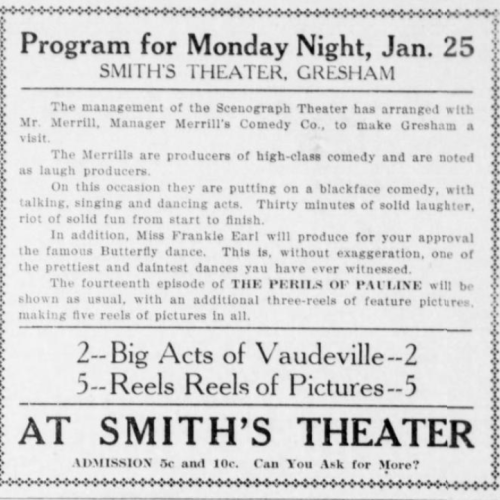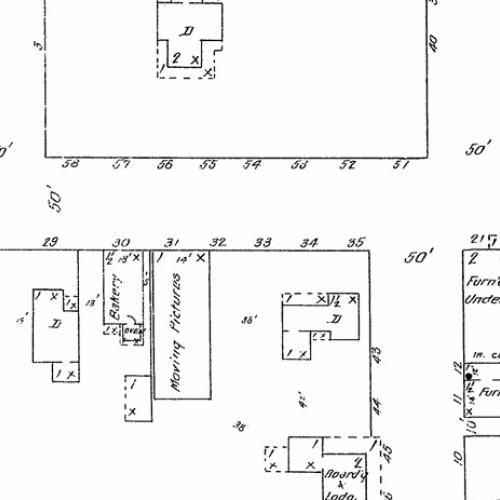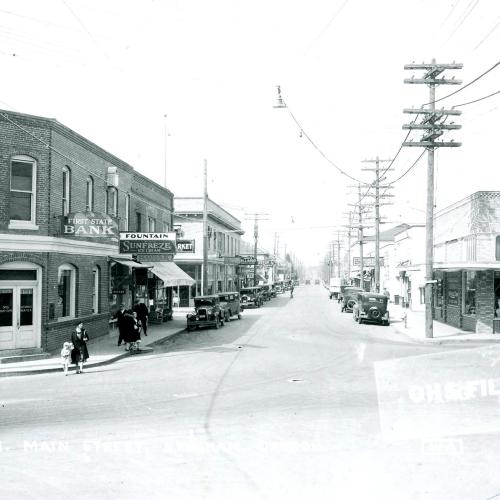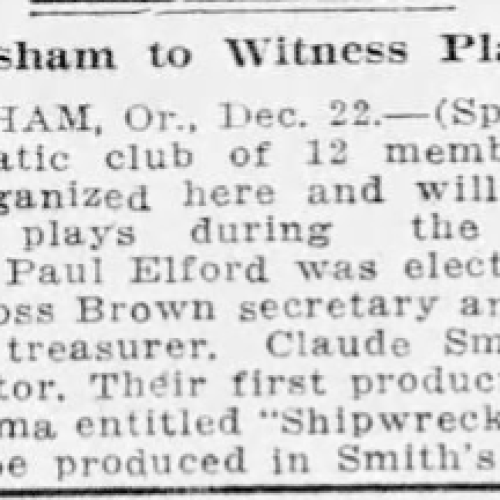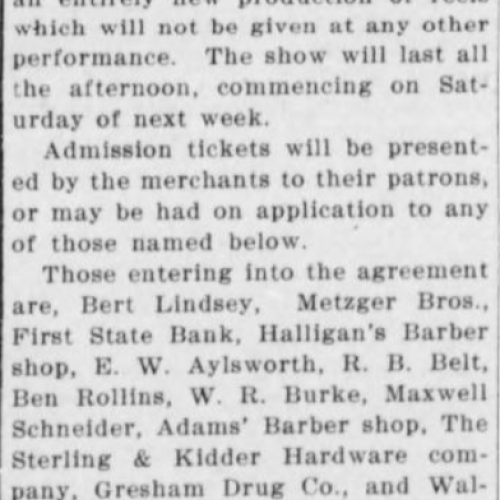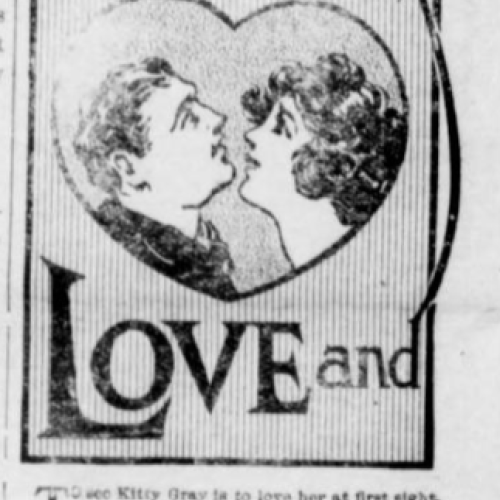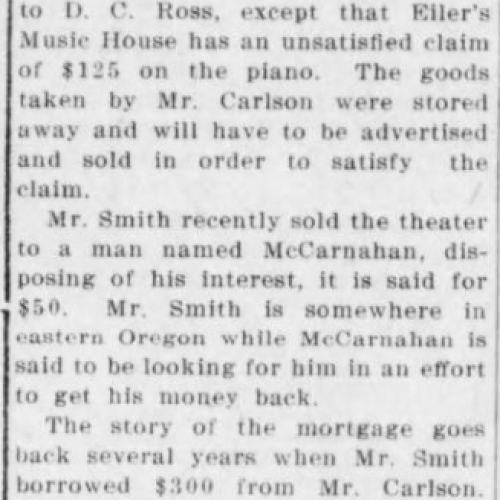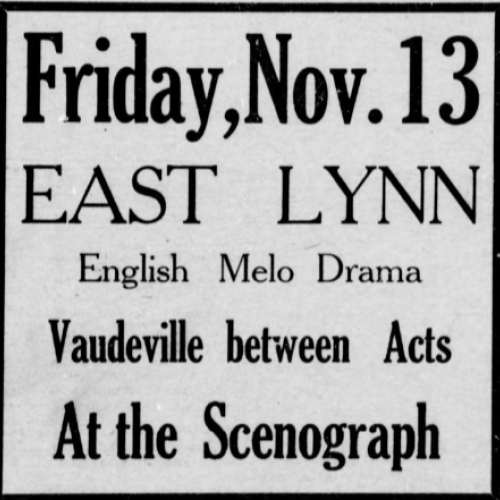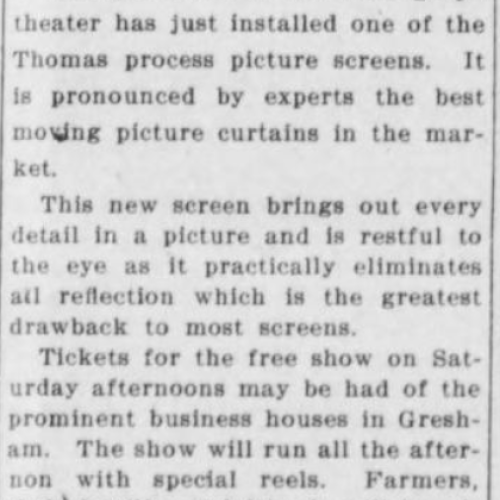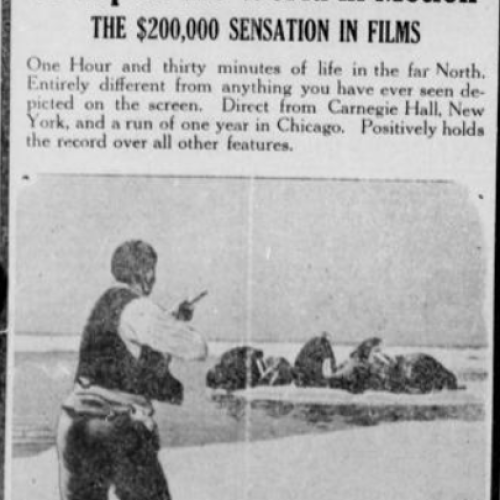The Scenograph Theater opened its doors in 1911 marking the beginning of motion pictures in Gresham. For the majority of the theater's lifespan, it specialized in motion picture and serial exhibition. Starting in 1915, the theater hosted Gresham's drama club where they would put on live performances of theatrical plays with the Scenograph Theater's proprietor, Claude Smith, as the director.
The theater was heavily advertised in the Gresham Outlook, a local newspaper, especially for events like free shows, serials and holiday events. In addition, the theater made many advertisement deals with other vendors such as Merrill's Comedy Co. and local merchants of Gresham. These deals were typically special performances such as Merrill's Comedy Co.'s blackface comedy, singing and dancing acts or free showings based on patronage to other local stores to receive a free showing's admission ticket.
The Scenograph Theater was located on the intersection of Gresham's old Main Street which is now North Main Avenue and 3rd Street which is now Northwest 3rd Street. Although there is not exact record of how many the Scenograph Theater seated, based on the Sanborn insurance map measurements we know that it was the typical size and layout of a nickelodeon which typically sat 300 people. Admission prices were typically 15¢ for general admission and 25¢ for premium admission but it would be more or less expensive depending on the popularity of the film playing. In August 1915, the theater implemented a new screen called the "Thomas process picture screen."
The typical programming of the Scenograph Theater was either a single showing of a film or a single showing of a serial. On rare occasions they would match a film with a serial episode or play two serial episodes. During special events, such as holidays, they might show multiple films. Depending on what was showing, the theater would also have Vaudeville performances in addition to the motion pictures.
Close to the closure of the Scenograph Theater, a sale of the theater was commenced where Claude Smith gave up all his interest in the theater to a man named McCarnahan for $50 (about $1,200 dollars today). However, not long after the sale, the Scenograph Theater was closed via a judge ruling, specifically on July 9th, 1917, due to a mortgage of $100 (about $2,400 dollars today) that Claude Smith did not pay off. McCarnahan uninformed of this mortgage attempted to track Claude Smith down to get his money back however, Claude Smith had already fled to eastern Oregon.

Gresham Outlook, July 4th, 1911: 4 Historic Oregon Newspapers
